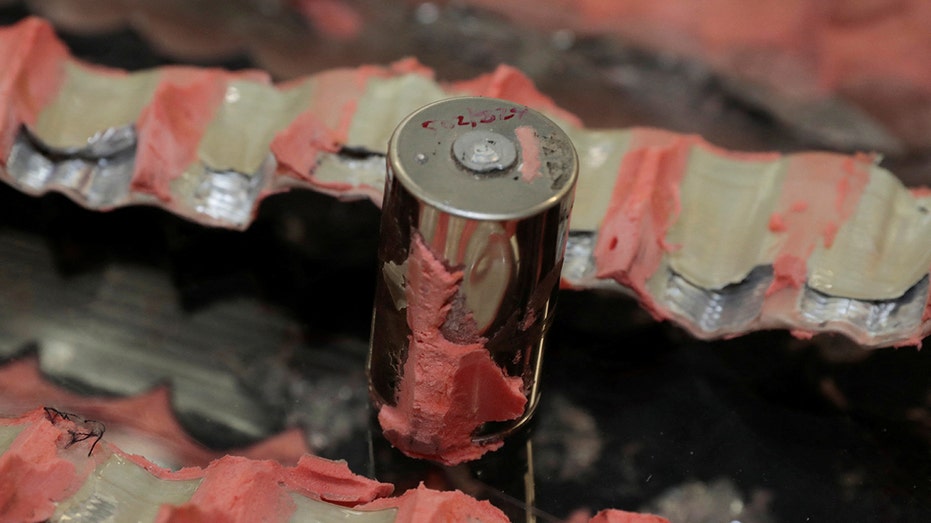What if your Tesla could run on sodium?
Lithium-ion batteries in today’s electric vehicles have a credible new competitor
Kodak capitalizes on coating technology, enters EV battery sector
Eastman Kodak CEO Jim Continenza discusses the iconic film brand's foray into the electric vehicle battery business on 'The Claman Countdown.'
If sodium is the new lithium, investors may need to rethink a favorite energy-transition trade.
One of the most potentially disruptive snippets of news to come out of the Shanghai auto show this week wasn’t from Tesla or one of its flashy Chinese competitors but from a company that doesn’t make vehicles at all: CATL. The world’s largest battery producer said its first sodium-ion battery would power electric vehicles built by Chinese brand Chery, though it didn’t say when.
This adds to a drip-drip of signals that cheaper sodium-ion battery chemistry is moving out of the science lab and onto streets. Another one: Chinese EV leader BYD on Tuesday launched a hatchback, the Seagull, one variant of which may run on a sodium-ion battery, according to some reports that the company hasn’t confirmed. If the Seagull doesn’t use the new chemistry, other coming BYD models likely will.

People use their phones in front of the BYD Seagull that is displayed at the Auto Shanghai show, in Shanghai, China April 19, 2023. REUTERS/Aly Song
New technologies usually seep into the car industry from the top end, where consumers can afford the latest gadgets. Battery innovations, where the big goal is reducing cost, are shaping up differently.
FORD CEO REVEALS EV REALITY: AMERICA 'CANNOT CONTINUE TO IMPORT' BATTERIES, EARTH MINERALS
Cheaper but less powerful lithium iron phosphate, or LFP, batteries once weren’t considered a mainstream alternative to those that drive most EVs outside China today, which are rich in nickel and cobalt. Then nickel and cobalt prices rocketed, forcing auto makers to find workarounds as they prepared their EV supply chains for growth. In 2021, Tesla said it would adopt LFP for some lower-range models. Ford, Volkswagen and others have since taken the same route.
| Ticker | Security | Last | Change | Change % |
|---|---|---|---|---|
| TSLA | TESLA INC. | 467.80 | -22.08 | -4.51% |
Could sodium-ion technology follow the pattern? LFP replaced scarce nickel and cobalt with abundant iron, but doubled down on scarce lithium. As nickel and cobalt prices cooled last year, lithium prices stayed high. Sodium ion in turn replaces scarce lithium with abundant sodium. The price of battery-grade lithium carbonate in China has dropped 60% this year, according to data provider Benchmark Mineral Intelligence. Slower EV sales in the country as subsidies expired are the most obvious reason, but behind the scenes the rise of sodium ion might be another.

BYD Rolls Off Its 3 Millionth New Energy Vehicle and Debuts A New Passenger Car Brand Matrix (Photo: Business Wire via AP Newsroom / AP Newsroom)
The new technology is less powerful than the latest lithium batteries. But it matches the older generations of lithium batteries that are in EVs today, so consumers might not care. And it has other advantages—being less fire-prone and more capable in freezing temperatures.
EV BATTERIES LACK REPAIRABILITY LEADING SOME INSURERS TO JUNK WHOLE CARS AFTER EVEN MINOR COLLISIONS
Sodium ion will almost certainly find a role in the fast-growing battery industry, particularly for applications where energy density matters less, such as grid storage and small city EVs. The question is how wide it will be. That depends not just on the technology, but also on lithium prices. Its recent price drop might take some of the momentum out of the search for alternatives.

A Tesla 4680 cell from a structural battery pack pulled from a Tesla Model Y, built in Austin, Texas, is displayed in Auburn Hills, Michigan U.S. March 3, 2023. (REUTERS/Rebecca Cook / Reuters Photos)
If signs continue to mount that sodium ion is going mainstream in the way LFP did, investors may have to further rein in their expectations for top lithium producers such as Albemarle and SQM. Although their share prices have fallen in recent months and appear cheap on eight and seven times forecast earnings, respectively, they are still underpinned by the assumption that lithium-based batteries will be indispensable in the energy transition.
CLICK HERE TO GET THE FOX BUSINESS APP
Now, the future of batteries is starting to look more like a battle between different chemistries, with the mix both driving and driven by prices of the underlying commodities. Investors need to work hard to keep up with electric vehicles—a fast-moving technology in more ways than one.




















